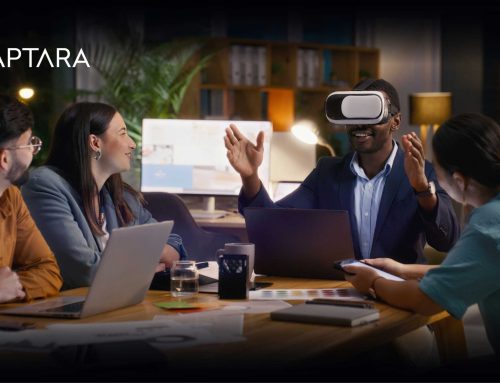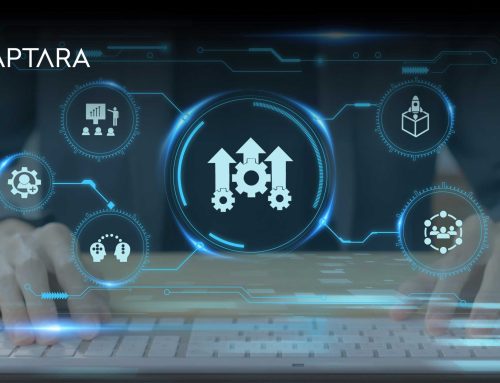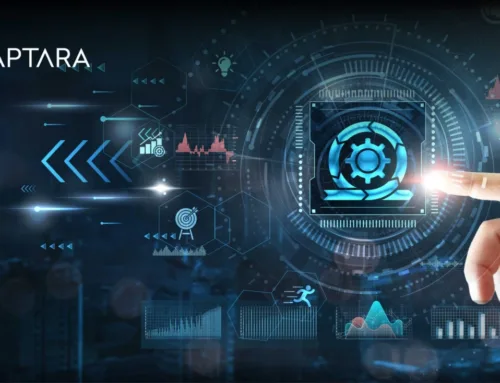Traditionally, Learning and Development (L&D) was seen as a support functional necessary cost rather than a strategic contributor. But today’s business demands more.
Even though many recognize the benefits of workplace learning, there’s still a big gap. According to McKinsey, only 40% of organizations have a learning strategy that is aligned with their business goals. That means most training efforts risk falling short, not because they lack content, but because they lack direction.
When learning and development strategy is tightly integrated with long-term business strategy, it transforms from a passive function into a proactive force. Every corporate learning initiative, from employee onboarding to leadership development, becomes part of a larger plan to drive measurable impact. The bottom line? Learning programs should do more than deliver skills. They should solve real business problems. And that starts by making alignment your key.
Benefits of Aligning Learning with Business Goals
When corporate training solutions are built to directly support business outcomes, organizations gain strategic partners in every department. Instead of launching generic training programs, corporate learning services can address the root causes of performance gaps. For instance, if a sales team is underperforming, the issue might not be their sales pitch but a breakdown in the sales process or a lack of product knowledge. An aligned approach allows L&D teams to identify these issues and create customized employee training that solves the real problem.
A well-aligned learning strategy fosters a culture of continuous learning, where teams regularly improve their performance and stay ahead of change. This mindset supports agile workforce development and further allows businesses to adapt to shifts in the market or new technology demands. It also strengthens cross-functional collaboration by creating a shared understanding of company goals across departments. When teams like Sales and Marketing train around a common strategy, their alignment enhances efficiency and outcomes.
Steps to Align Learning Strategies with Organizational Goals
Step 1: Define the Future
The starting point of any learning and development strategy isn’t in the past, it’s in the possibilities ahead. What does your ideal future look like? Whether you’re aiming to reduce production time, scale into new markets, or double your client base, your business vision needs to be clear, actionable, and inspiring. This clarity sets the tone for aligning corporate training solutions with your business direction.
Step 2: Find the Gaps
Now, let’s talk about where you are today. Are your teams equipped with the right knowledge, skills, and abilities to meet those future goals? A thorough training needs analysis (TNA) helps you assess performance gaps and identify where your corporate learning services might be falling short.
This isn’t about pointing fingers but about figuring out how your organizational development can be enhanced by smarter learning interventions. You’ll spot which departments need employee upskilling, cross-skilling, or even reskilling, and where your employee development strategy needs to go next.
Step 3: Set Strategic Learning Goals
Once you’ve identified the gaps, it’s time to turn insight into action. Define training goals that directly connect to business outcomes. For example, if speed is your competitive edge, use customized employee training to help teams optimize time management and tech utilization.
This step transforms your L&D plans from reactive to proactive—using strategic learning as a business growth lever.
Step 4: Communicate the ‘Why’ Behind Training
A brilliant training plan falls flat if employees don’t understand its purpose. They need to know how learning connects to their day-to-day work, and to the bigger picture. This is where a well-articulated employee engagement strategy becomes crucial.
Show them how every module, whether delivered through eLearning platforms or in-person sessions, is designed not just to make them better at their jobs, but also to move the company closer to its mission. When people see the “why,” they commit to the “how.”
Step 5: Deliver Training That Works—Really Works
Now comes the execution. The ideal training isn’t just informative, it’s intuitive. Today’s learners expect more than slideshows. They want mobile-ready, bite-sized, just-in-time knowledge. This is where learning management systems (LMS) and AI-powered learning tools make the difference.
Modern corporate training technologies allow you to offer personalized learning paths, adaptive assessments, and gamified content—all tailored to the needs of your workforce. When training fits into their flow of work, it becomes part of their growth story.
Step 6: Encourage Continuous Learning on the Job
Learning shouldn’t stop once the training ends. Create a culture where people are encouraged—and empowered, to apply new skills in real time. Leaders play a big role here by modeling curiosity, rewarding initiative, and making space for practice.
Supporting continuous learning isn’t just good for individual growth. It reinforces your agile workforce development efforts, making sure the business is always ready to adapt to new challenges and opportunities.
Step 7: Measure, Reflect, and Repeat
Finally, no strategy is complete without evaluation. Keep tabs on what’s working and what’s not. Monitor participation, performance improvements, and impact on key business metrics. Your employee retention strategy and engagement scores may thank you later.
In a Nutshell
Learning and development teams no longer shoot in the dark—they gain clarity, direction, and the ability to prioritize training efforts that make the biggest impact. Employees, in turn, receive customized employee training that’s timely, purposeful, and directly tied to their roles. This makes learning more than just professional development—it becomes a path to relevance, engagement, and career progression. Meanwhile, leadership and stakeholders witness a measurable, meaningful return on investment, strengthening the business case for future-ready corporate training technologies and AI-powered learning tools.
The long-term payoff? A more resilient, innovative, and agile workforce. One where employee upskilling, continuous learning, and organizational development are not reactive measures but core strategies for growth. This future doesn’t happen by accident, it’s crafted through intentional, strategic learning that keeps pace with market shifts, customer demands, and emerging trends.





